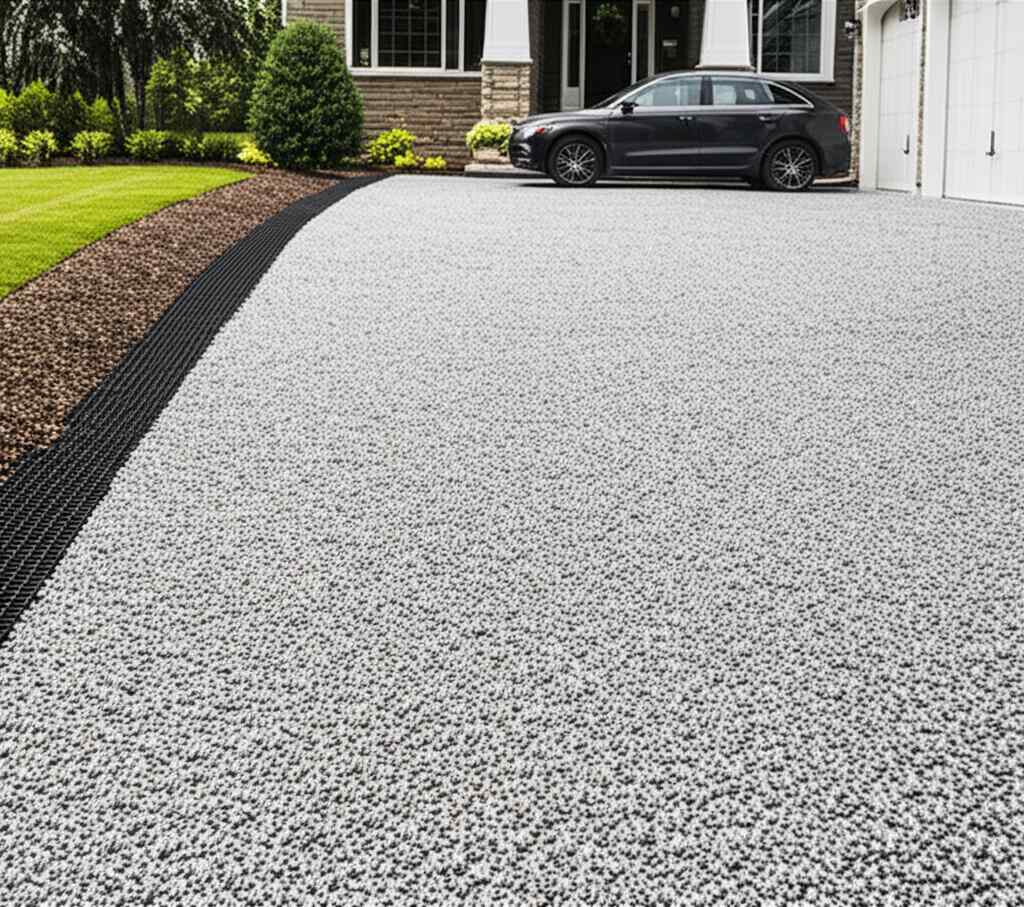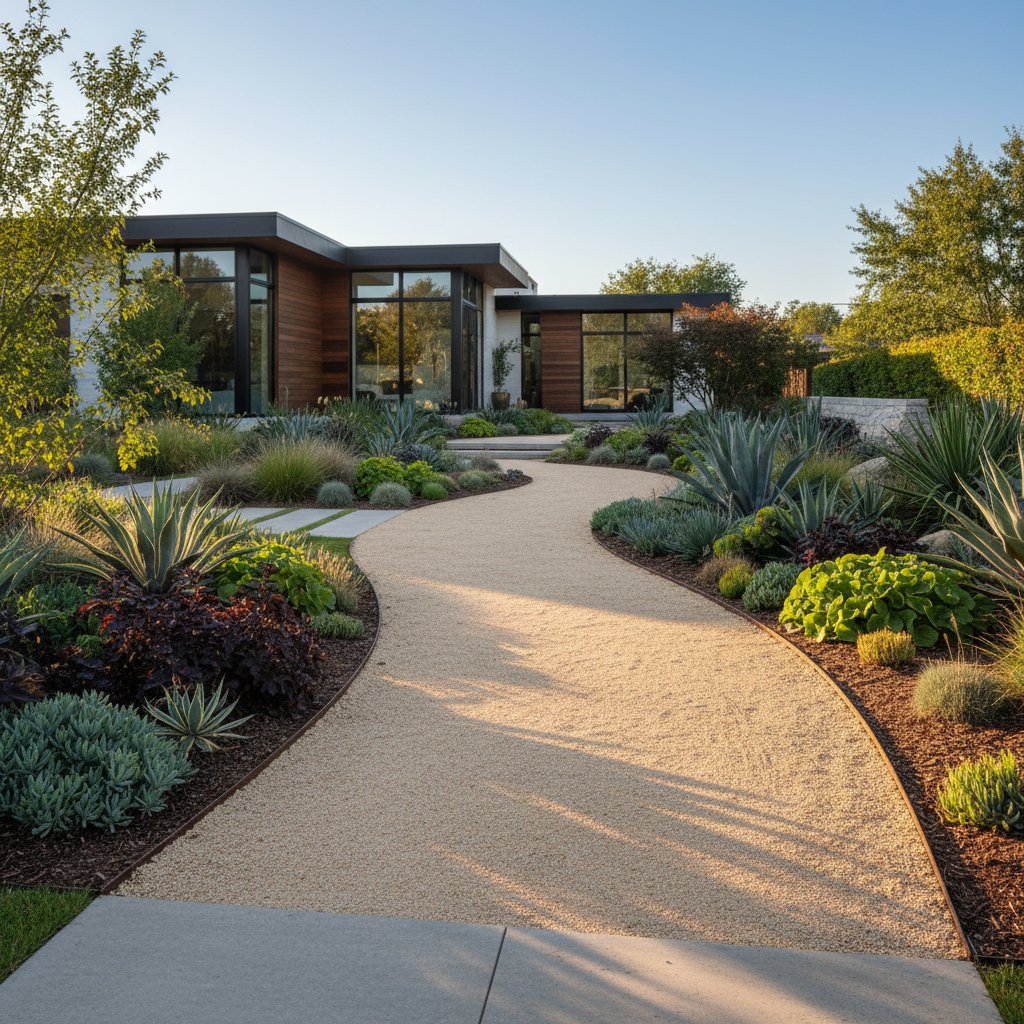Uncover the Secret to a Maintenance-Free Gravel Driveway
There is a certain allure to a gravel driveway, with its earthy texture and the satisfying crunch underfoot as you approach your home. However, the charm often fades when faced with the reality of endless upkeep: ruts forming after heavy rain, weeds sprouting relentlessly, and stones scattering into the lawn. Gravel grid systems present a transformative solution, merging the rustic beauty of gravel with cutting-edge stability to create a driveway that requires minimal effort to maintain while delivering lasting appeal.
What Are Gravel Grid Systems?
A gravel grid system consists of a sturdy, honeycomb-shaped framework, typically crafted from high-strength plastic or resin. Installed over a compacted base, these grids are filled with gravel, locking each stone in place to prevent shifting or spreading. This design eliminates the uneven surfaces and messy edges common with traditional gravel, offering a neat, uniform look. Additionally, the permeable structure allows water to seep through to the soil below, reducing puddles and enhancing drainage during wet weather.
How Gravel Grids Compare to Other Driveway Materials
When choosing a driveway surface, each option brings distinct advantages and challenges. Concrete provides a sleek, modern finish but often cracks under pressure or temperature changes, demanding costly repairs. Asphalt creates a smooth driving surface, yet it requires regular sealing and can degrade in extreme heat. Traditional gravel, while budget-friendly and visually appealing, frequently shifts, creating ruts and requiring constant raking or replenishment.
Gravel grids offer a compelling middle ground. They retain the natural aesthetic of gravel while addressing its instability, ensuring stones stay put even under heavy vehicle traffic. Unlike impermeable surfaces like concrete, grids promote water filtration, which helps prevent erosion and supports a healthier landscape over time.
Why Low-Maintenance Matters
The primary draw of gravel grids lies in their ability to slash maintenance demands. Without a stabilizing grid, gravel driveways often develop deep grooves from tire tracks, necessitating frequent refills. Loose stones migrate into adjacent areas, creating extra cleanup tasks. With a grid system, the gravel remains contained, drastically cutting down on the need for regular top-ups or repositioning.
Weed control also becomes simpler. By laying a geotextile fabric beneath the grid during installation, you create a barrier that discourages weed growth while still allowing water to pass through. Though no system is entirely weed-proof, this setup makes any stray growth easier to manage, freeing up your weekends for enjoyment rather than labor.
Exploring Design Flexibility
Gravel grids open up a world of creative possibilities for driveway aesthetics. You can opt for a polished, formal appearance with straight lines and uniform gravel sizes, or embrace a more casual, countryside vibe with varied stone textures and organic shapes. The grid’s structure allows for finer gravel that would otherwise scatter, giving you more options to play with.
Color choices further enhance customization. Gravel is available in hues ranging from warm beige and golden tones to cool slate gray or rich charcoal. Selecting a shade that harmonizes with your home’s exterior ties the driveway into the overall design, while contrasting edging stones can add subtle definition and visual interest.
Key Steps for Installation
Achieving the benefits of a gravel grid driveway starts with proper installation. Begin by excavating the area to create a level surface, then add a layer of compacted aggregate as a stable foundation. A geotextile fabric placed beneath this base prevents soil from mixing with the gravel and aids in weed suppression. Once the grids are interlocked over this foundation, fill them with your chosen gravel and level the surface for a smooth finish.
While experienced DIY enthusiasts may tackle smaller projects like garden paths, larger driveways often benefit from professional expertise to ensure durability. Proper grading and compaction are critical to prevent settling or uneven wear over time, so consider your skill level before diving in.
Advantages Beyond Ease of Care
Gravel grids deliver more than just reduced upkeep; they contribute to environmental sustainability. Their permeability eases the burden on local stormwater systems by allowing rainwater to recharge groundwater naturally. This also means less standing water on your driveway, reducing mud and debris tracked into your home during rainy seasons.
Durability is another standout feature. The grid structure prevents gravel displacement, maintaining an even surface that resists dips and ruts. In colder climates, the locked-in gravel provides better traction during icy conditions compared to loose stones, enhancing safety for both vehicles and pedestrians.
Balancing Cost and Value
From a financial perspective, gravel grid systems typically cost more upfront than a basic gravel layer but fall below the price of full concrete or asphalt paving. The added expense of the grids is offset by long-term savings on maintenance, as you will spend less on replenishing gravel or fixing damage. For homeowners prioritizing both practicality and style, this investment often proves worthwhile over the years.
Sustaining the Look Over Time
Once installed, a gravel grid driveway demands only minimal attention to stay in top shape. Sweep away leaves or debris periodically to prevent buildup, and add small amounts of gravel to areas where settling occurs. Trimming the edges where the driveway meets grass or garden beds helps maintain a crisp outline, preserving the polished appearance with little effort.
Embracing Your Outdoor Vision
Opting for a gravel grid driveway is about more than eliminating chores; it is about crafting an outdoor space that aligns with how you live. Imagine pulling into a driveway that consistently looks inviting, drains effectively during storms, and withstands daily use without losing its charm. By choosing materials that harmonize with your property’s natural features, you create a landscape that feels cohesive and effortless, allowing you to focus on enjoying your home rather than maintaining it.

